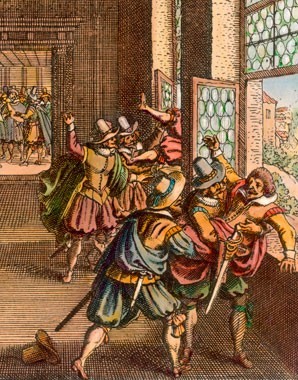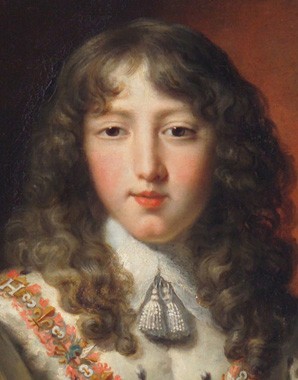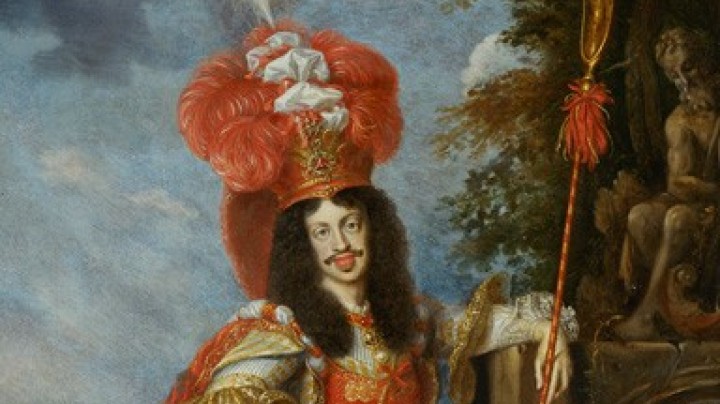Philip IV: Spain’s late glory or a slow decline?
Philip IV ruled for forty-four years, but his reign was characterized by inconsistency and contradictions.
Philip’s personality is often regarded as reflecting the decline of Spain as a Great Power. Under his rule the Spanish court is supposed to have been a hotbed of pleasure-seeking, rampant favouritism and pervasive corruption.
However, some biographers have seen in this member of the Habsburg dynasty a person of integrity and well-meaning and intelligent monarch who was better suited to royal office than his father. According to their view, it was thanks to him that Spain was able to preserve at least the façade of a Great Power and that its decline was slowed.
As king Philip made desperate – and mostly unavailing – attempts to preserve Spain’s authority in Europe. After a long period of peace lasting twelve years and resulting from the exhaustion of the two adversaries, fighting flared up again in the Netherlands. The northern provinces, de facto independent as the States General since 1581, came under attack once again. However, the latter had made better use of the period of peace to rally their forces than the unwieldy colossus of Spain. The result of this failed attempt by Spain to subdue the northern provinces was that Philip was forced to finally acknowledge their independence in the Peace of Westphalia in 1648.
Spain’s relationship with England, its most important rival as a naval power, at first developed positively. A degree of rapprochement was planned with the marriage of Philip’s sister, Infanta Maria Anna, to the heir to the throne, Charles. Shadowy intrigues and Philip’s ultimate refusal to allow a Spanish princess to become the wife of a Protestant offended the English court. Following his ascension of the throne, Charles I pursued an emphatically anti-Spanish policy that was continued after his execution by Oliver Cromwell. The aim of this policy was to keep up a running battle with the Spanish navy, although this in fact amounted to little more than the threatening of seaports and the systematic capture of ships carrying supplies of silver to Spain.
Spain’s greatest enemy during this time was France, which entered the Thirty Years’ War in 1635. The reason for this was the successes of the imperial army in the Empire, which received diplomatic and financial support from Spain, against the Protestant electors. France entered into an alliance with Sweden, Holland and Savoy, declaring war on Spain to relieve its allies in the Empire. The Habsburgs were thus caught in a war on two fronts, and their initial successes turned into defeat: the dynasty was made painfully aware of the limits of Habsburg fantasies of omnipotence.
In this difficult situation Spain was plunged into a crisis. Central royal power was confronted with rebellions in several parts of the kingdom against the prohibitive taxes levied to cover the spiralling costs of the war at a time of economic difficulty. The worst setback for Spain was the secession of Portugal in 1640, which Philip was forced to accept, lacking the necessary forces to prevent it.
Having reached the point of political, military and economic exhaustion, Philip was forced to conclude the Peace of the Pyrenees with France in 1659. The treaty was very disadvantageous for Spain, as it sealed the loss of European hegemony in favour of France, to which additional territorial concessions had to be made. For the French king Louis XIV it was a triumph.
To secure the peace in dynastic terms Philip’s eldest daughter, Maria Teresa, was married to the Sun King. Future French claims on the Spanish inheritance were founded in the looming extinction of the Spanish Habsburgs: the sons that were born to Philip had weak constitutions and there were doubts as to whether they would survive.
The peace was of only brief duration. Ostensible breaches of various terms of the peace treaty (including the issue of a dowry for Maria Teresa) led to a rekindling of hostilities. Spain lost yet more ground: the Peace of Nijmwegen in 1678 resulted in large losses of territory, with the Franche Comté and parts of the Spanish Netherlands falling to France. The ensuing War of the Reunions led to further losses, as Louis XIV’s expansionist plans defined the Rhine as the France’s ‘natural border’. It began to become apparent that the Austrian line would soon make good their claim to assume leadership of the dynasty.
Mentally and physically exhausted, King Philip IV died at the age of sixty in 1665, leaving a Great Power in decline to his four-year-old son, Charles, whose development gave little occasion for hope.















